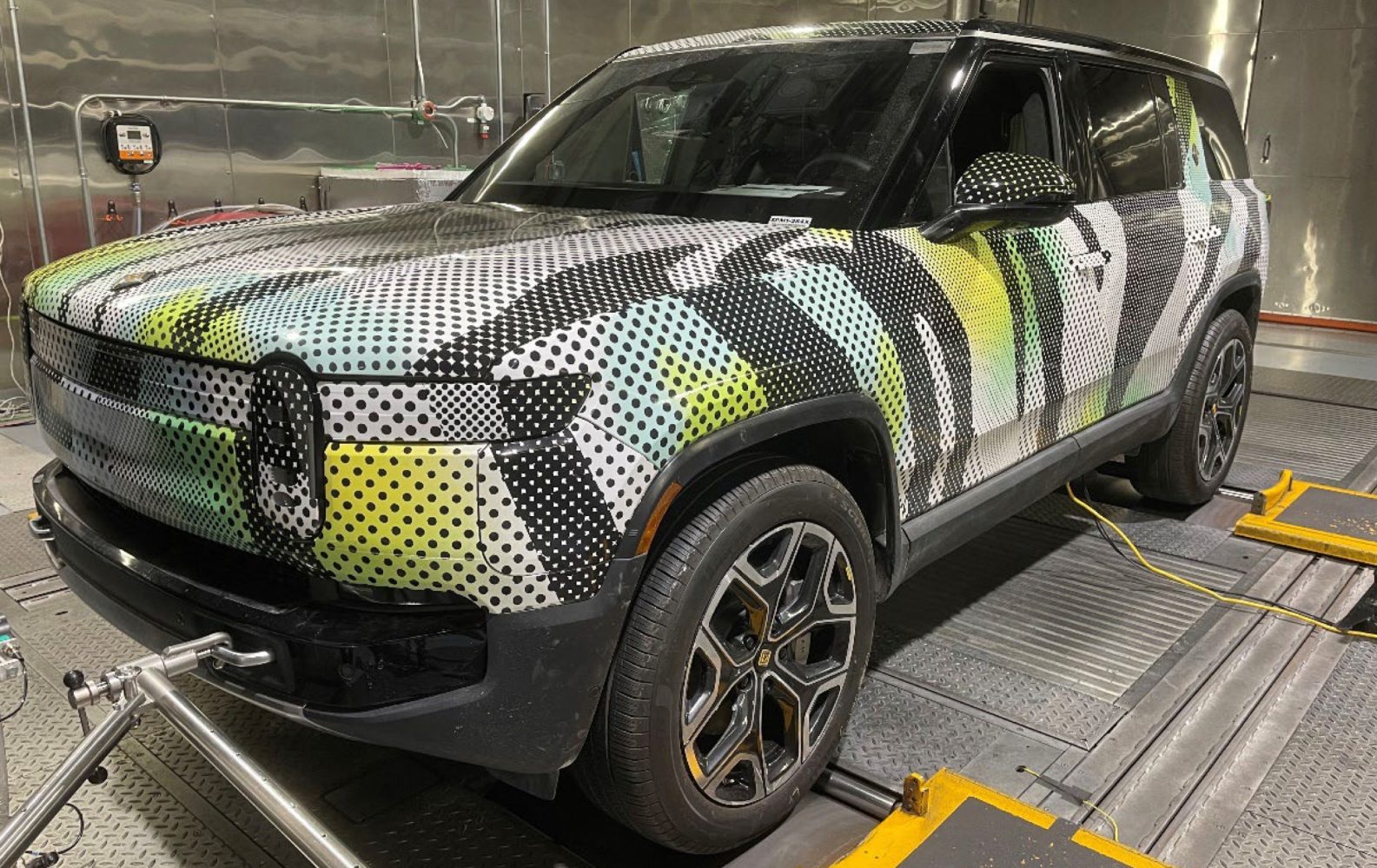
Rivian has applied to certify its 2025 model year R1T and R1S with the EPA, and the document reveals some big changes in store.
After seeing some camouflaged Rivians roaming around recently, we’re finding out information about what updates the company will make for the 2025 model year, with a document that was posted to Rivianforums.com.
The biggest changes relate to the battery and the addition of a heat pump, which helps efficiency in cold weather.
Rivian has four battery options – Standard, Standard+, Large, and Max. The Standard pack is still quite large at 106kWh, giving around 270 miles of range to the R1T and R1S when configured.
But 106kWh is still a lot of batteries, and is definitely quite a chunk of change to add to a car. Rivian’s R1 vehicles aren’t cheap, starting at $70k, and the company is further looking for ways to save cost as it works towards profitability.
So it looks like next year’s truck will shift to a lower-capacity lithium iron phosphate (LFP) battery. LFP batteries offer a number of advantages over NMC batteries, including cost, durability, and less conflict minerals which can make sourcing difficult. However there are a few downsides, like cold-weather performance and energy density.
LFP has lower energy density than NMC does, which means that in a world where everyone thinks range is the only number that matters and bigger always means better, manufacturers have hesitated to switch, particularly on higher-end vehicles. Although some of that is mitigated by LFP’s greater durability, which means manufacturers recommend that LFP batteries can be charged to 100% every day, whereas other EVs typically charge to 80-90% on a daily basis.
But given the cost and other advantages, we’re starting to see more LFP batteries in entry-level vehicles, keeping costs down (and/or margins up, as the case may be).
We’re not sure which option Rivian will opt for here. It could lower prices on next year’s model to induce demand, but it can also use this as an opportunity to save on costs and help get its margins up. If EPA range goes down (as it likely will due to lower total energy – but the new battery is also 152lbs lighter), it will likely have to offer some price cut to satisfy customers.
Other battery packs will likely remain the same, though perhaps with a few more miles due to other efficiency changes coming to the vehicle.
Top comment by Blake
BYD & CATL have both just released LFP cells with significantly increased energy density that is on par with NMC. Could supply Rivian’s new pack
One change that might affect range is a change in wheels, as the document shows that Rivian is introducing new 22-inch aerodynamic wheels, and seemingly eliminating the 21-inch wheel option. We don’t know what the design will look like, but aerodynamic wheels can be a big efficiency gain (though larger wheels usually detract from efficiency slightly too).
Even more efficiency is brought with the addition of a heat pump, which was one of the few oversights on current R1 models. While those of us in California have no need for one of these, Rivians are popular in areas which see a lot of cold weather, and in the cold, EVs use a lot of heat to warm the cabin. Since EVs don’t have access to waste heat from the engine, that all has to be generated electrically. Heat pumps are 3-4x more efficient at generating heat than standard resistive heating coils are, which makes them a great way to improve cold weather efficiency – especially important for an “adventure truck” like the Rivian.
Rivian is continuing to use CCS for its onboard charge port instead of NACS, at least for 2025. Rivian has started shipping NACS adapters to owners so that their cars can be used on Tesla’s Supercharger network, with the eventual understanding that the cars would get NACS ports themselves. Rivian originally said that its cars would have NACS starting in 2025, but that timeline seems to have been pushed back. Current Rivians can charge at peak 220kW, though the upcoming LFP battery will have a lower peak of 210kW.
Beyond the charging and efficiency changes, the new model year will apparently have a new base trim of some sort (which we have no details on), and will relocate the AC compressor to reduce vehicle noise and vibration.
FTC: We use income earning auto affiliate links. More.




Comments